*NURSING > ATI > ATI Capstone Fundamentals Pre-Assessment Exam - Questions and Answers with Rationales (All)
ATI Capstone Fundamentals Pre-Assessment Exam - Questions and Answers with Rationales
Document Content and Description Below
ATI Capstone Fundamentals Pre-Assessment Exam - Questions and Answers with Rationales A client with hearing loss has been fitted for a hearing aid. Which of the following teaching points are importan... t for the nurse to discuss with the client? A. Use the highest setting to promote full auditory comprehension. B. Use mild soap and water to clean the ear mold. C. Turn the hearing aid off to conserve battery life during hours of sleep only. D. Immerse the hearing aid in saline solution to keep it hygienic. Rationale: To clean the ear mold, use mild soap and water while keeping the hearing aid dry. Use the lowest setting that allows hearing without feedback. When the hearing aid is not in use, turn it off or remove the batteries to conserve battery power. Keep replacement batteries on hand. A nurse is admitting a client who has tuberculosis and a productive cough. Which of the following types of isolation precautions should the nurse initiate for the client? A. Contact B. Droplet C. Protective D. Airborne Rationale: The nurse should initiate airborne precautions when a client has an infection that spreads through small droplets that remain airborne for longer periods, such as tuberculosis and measles. The client requires a negative-pressure airflow room, and staff should wear an N95 respirator when in contact with the client. The nurse should initiate contact precautions when a client has an infection that spreads through indirect contact, such as major wound infections or infection with multi-drug resistant organisms such as MRSA. The nurse should initiate droplet precautions when a client has an infection that spreads through droplets larger than 5 microns, such as pneumonia or streptococcal pharyngitis. The nurse should initiate a protective environment when clients require a room with positive-pressure airflow, such as those who have undergone stem-cell transplants. A nurse is assessing a client who has Parkinson's disease. Which of the following manifestations should the nurse expect? A. Pruritus B. Hypertension C. Bradykinesia D. Xerostomia Rationale: The nurse should expect to find bradykinesia or difficulty moving in a client who has Parkinson's disease. The nurse should expect to find oily skin, which results from autonomic dysfunction, rather than pruritus, which results from dry skin. The nurse should expect to find orthostatic hypotension, which results from autonomic dysfunction. Te nurse should expect to find uncontrolled drooling, especially at night, instead of xerostomia or dry mouth in a client who has Parkinson's disease. A nurse is caring for a client with celiac disease. Which food should be removed from the meal tray? A. Corn bread B. Mashed potato C. Lentils D. Tortillas Rationale: Tortillas contain gluten. Corn bread, mashed potatoes and lentils do not contain gluten. A nurse is assessing four clients for fluid balance. The nurse should identify that which of the following clients is exhibiting manifestations of dehydration? A. A client who has a urine specific gravity of 1.010. B. A client who has a weight gain of 2.2 kg (2 lb) in 24 hr. C. A client who has a hematocrit of 45%. D. A client who has a temperature of 39 degrees Celsius (102 degrees Fahrenheit). Rationale: An elevated temperature is a manifestation of dehydration. The urine specific gravity is within the expected reference range of 1.010 to 1.025. Concentrated urine and a specific gravity of grater than 1.030 are manifestations of dehydration. Weight gain is a manifestation of fluid volume excess. The hematocrit is within expected reference range of 37% to 64%. An elevated hematocrit is a manifestation of hemoconcentration and dehydration. A nurse is caring for a client receiving radiation treatments for cancer. The client states he is experiencing dryness, redness and scaling at the treatment area. Which of the following should the nurse instruct the client to do? A. Sit in the sun for 15 minutes per day. B. Apply moist heat to the area twice daily. C. Liberally apply prescribed lotion to the area. D. Wash the affected area daily with antimicrobial soap. Rationale: Hydrating lotions are commonly prescribed to treat irradiated areas. Antimicrobial soaps can be harsh and further traumatize new epidermal cells. The client should avoid applying other lotions not prescribed by the radiologist to affected areas. Clients receiving radiation therapy should avoid exposing irradiated areas to sun. Moist heat should be avoided over irradiated areas. A nurse is caring for a client receiving opiates for pain management. Initially after the pain management plan was started, the client was sedated and sleeping most of the time. After three days on the plan the client is no longer sedated and sleeping regularly. What action should the nurse take? A. Initiate additional non-pharmacological pain management techniques. B. Notify the provider that a dosage adjustment is needed. C. No action is needed at this time. D. Contact the provider to request an alternate method of pain management. Rationale: Opiates initially cause sedation but this effect subsides with maintenance pain control. The pain management plan is working. There is no need to change or add additional methods at this time. A nurse is caring for a client with heart failure who has evidence of dyspnea, bibasilar crackles and frothy sputum. What dietary recommendations should be provided to this client in management of their heart failure? A. Decrease protein intake. B. Reduce sodium intake. C. Increase fluid intake. D. Decrease calcium intake. Rationale: It is encouraged to stop smoking, reduce sodium intake, monitor fluid intake, restricting intake to 2 L per day. It is also encouraged to increase protein intake to 1.12 g/kg and consume small, frequent meals that are soft, easy-to-chew foods. There are no recommendations on calcium intake associated with heart failure. A nurse is caring for several prescribed heat/cold therapies. Which of the following clients are at risk of injury from these therapies? Select all that apply. A. An older adult client prescribed heat therapy for hip pain. B. A middle age adult client prescribed cold therapy for muscle spasms. C. A client with diabetes prescribed cold therapy for a fractured toe. D. A fair-skinned, school age client prescribed heat therapy after a soccer injury. E. A cognitively impaired older [Show More]
Last updated: 1 year ago
Preview 1 out of 9 pages

Reviews( 0 )
Document information
Connected school, study & course
About the document
Uploaded On
Mar 26, 2023
Number of pages
9
Written in
Additional information
This document has been written for:
Uploaded
Mar 26, 2023
Downloads
0
Views
71

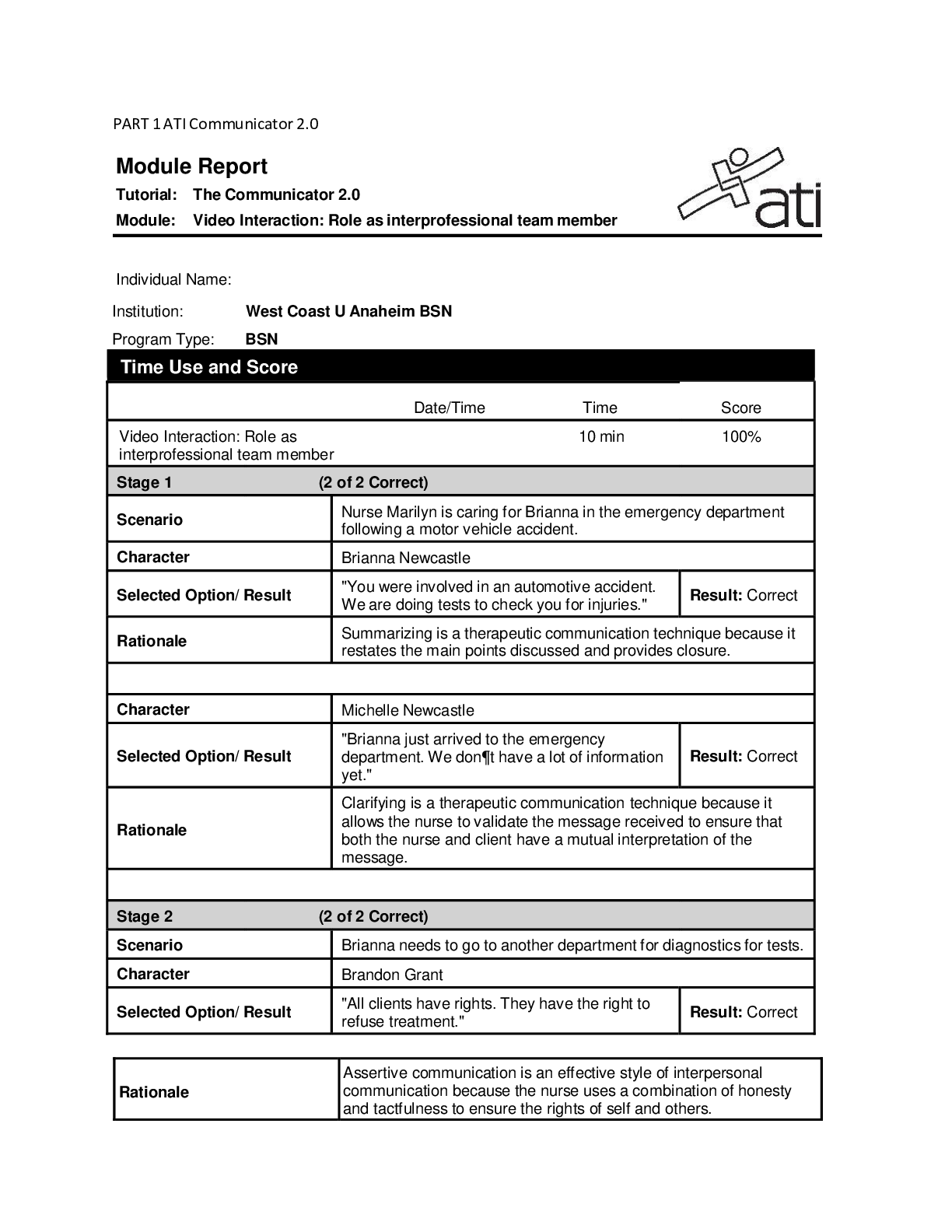

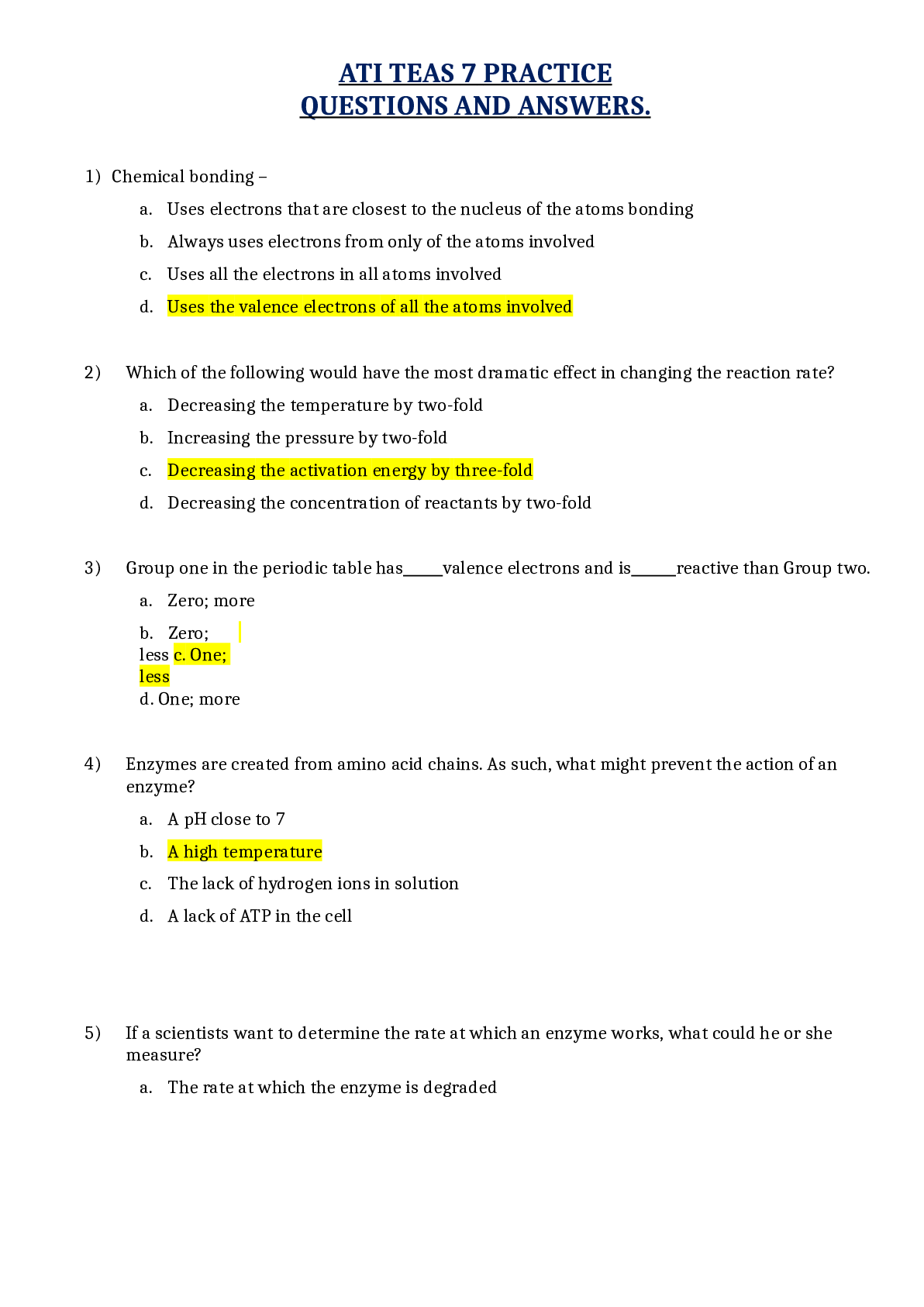
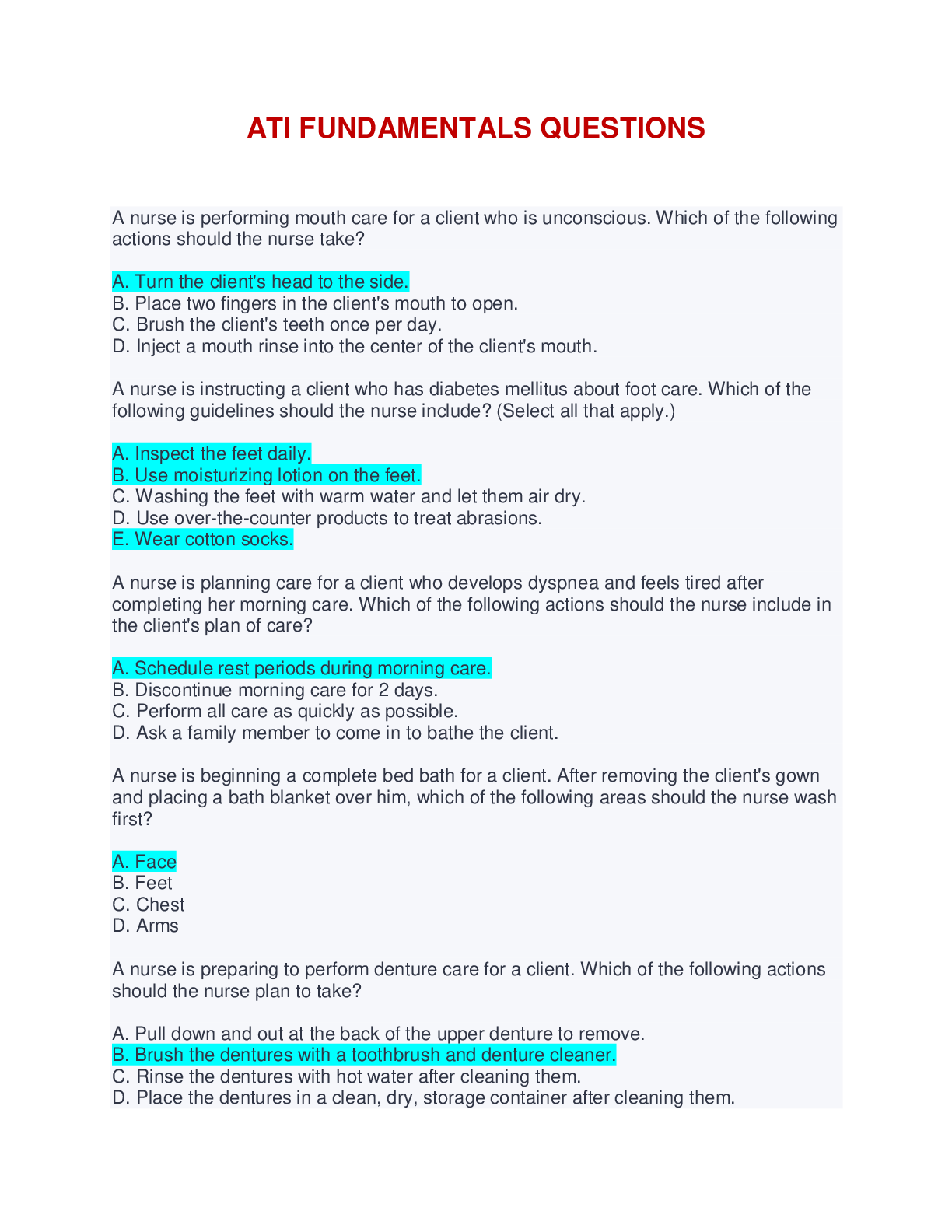

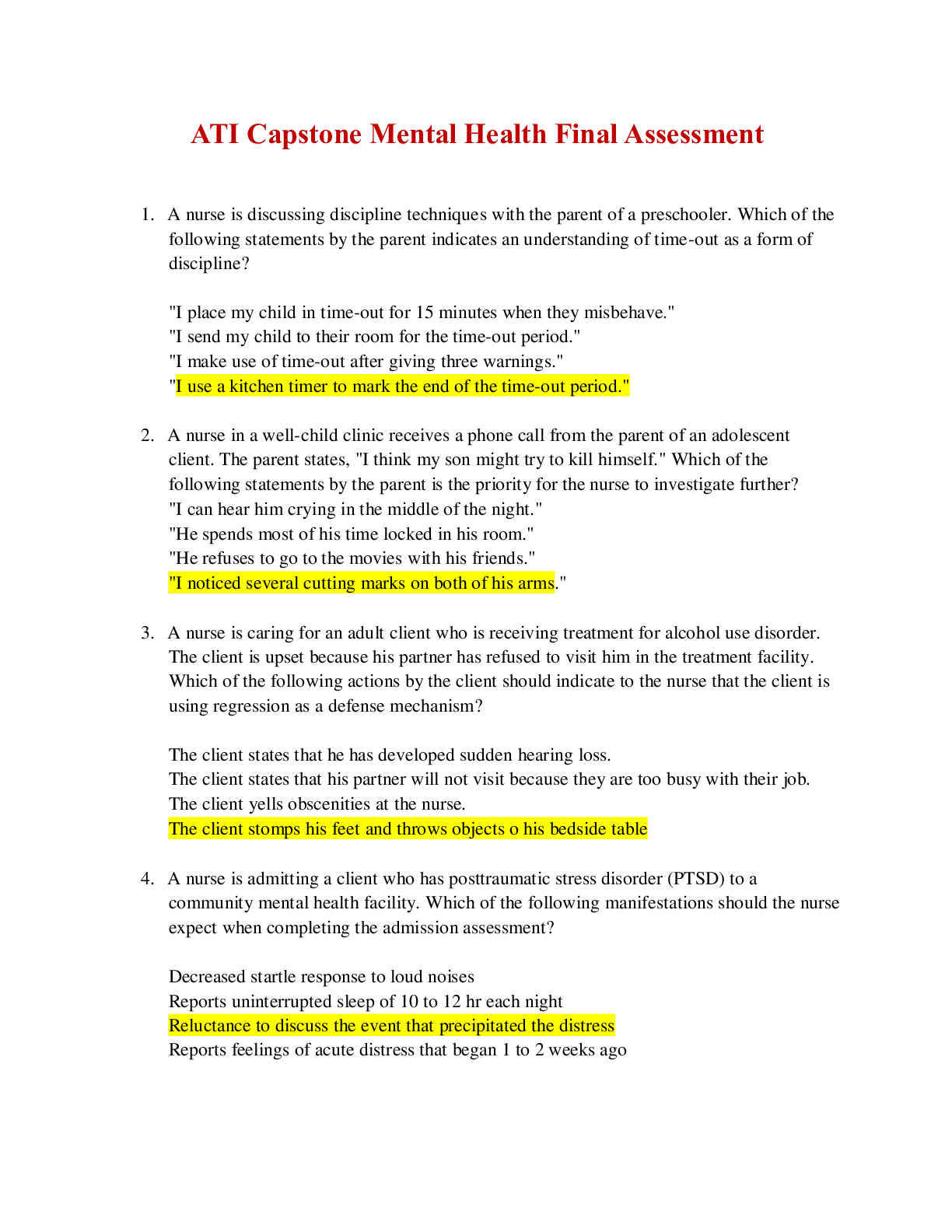


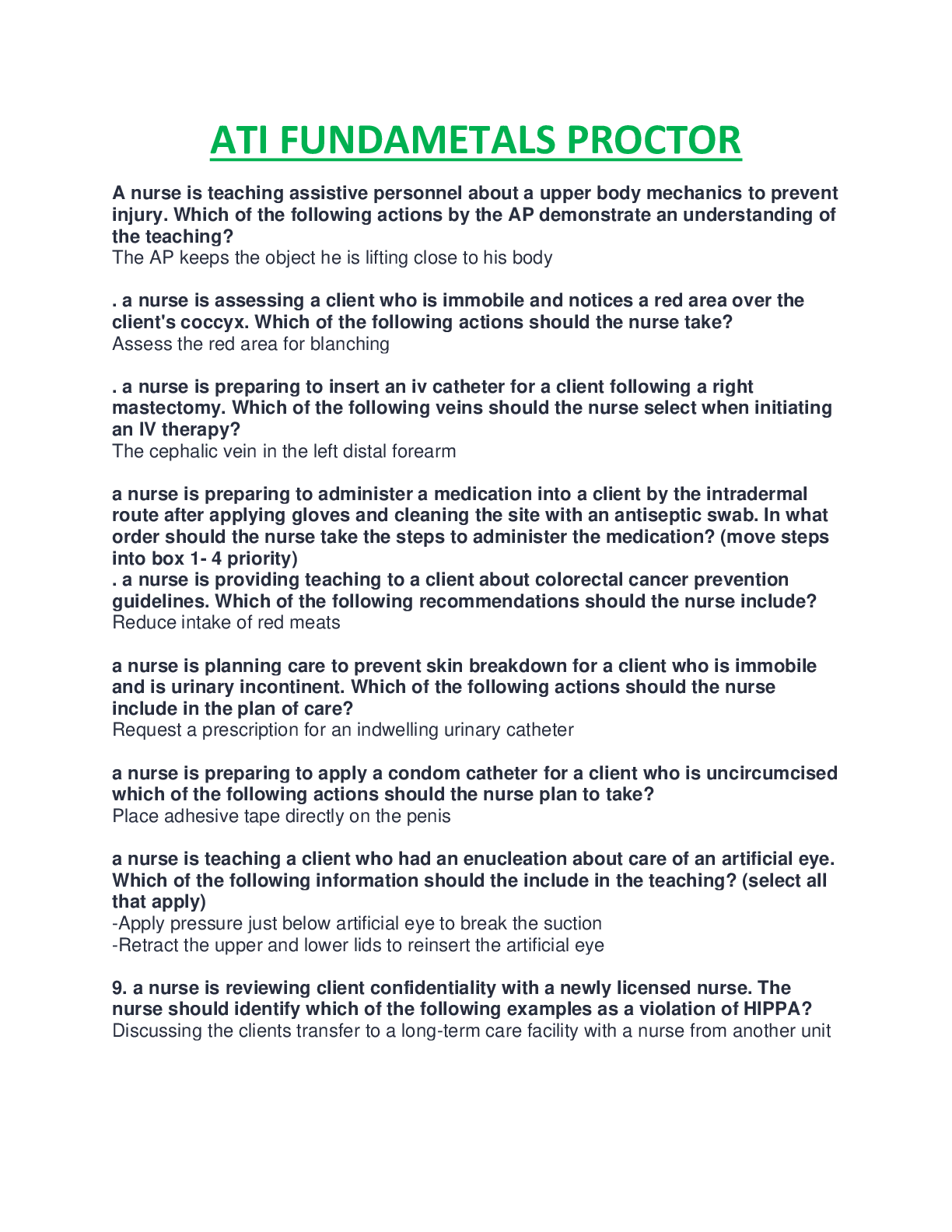
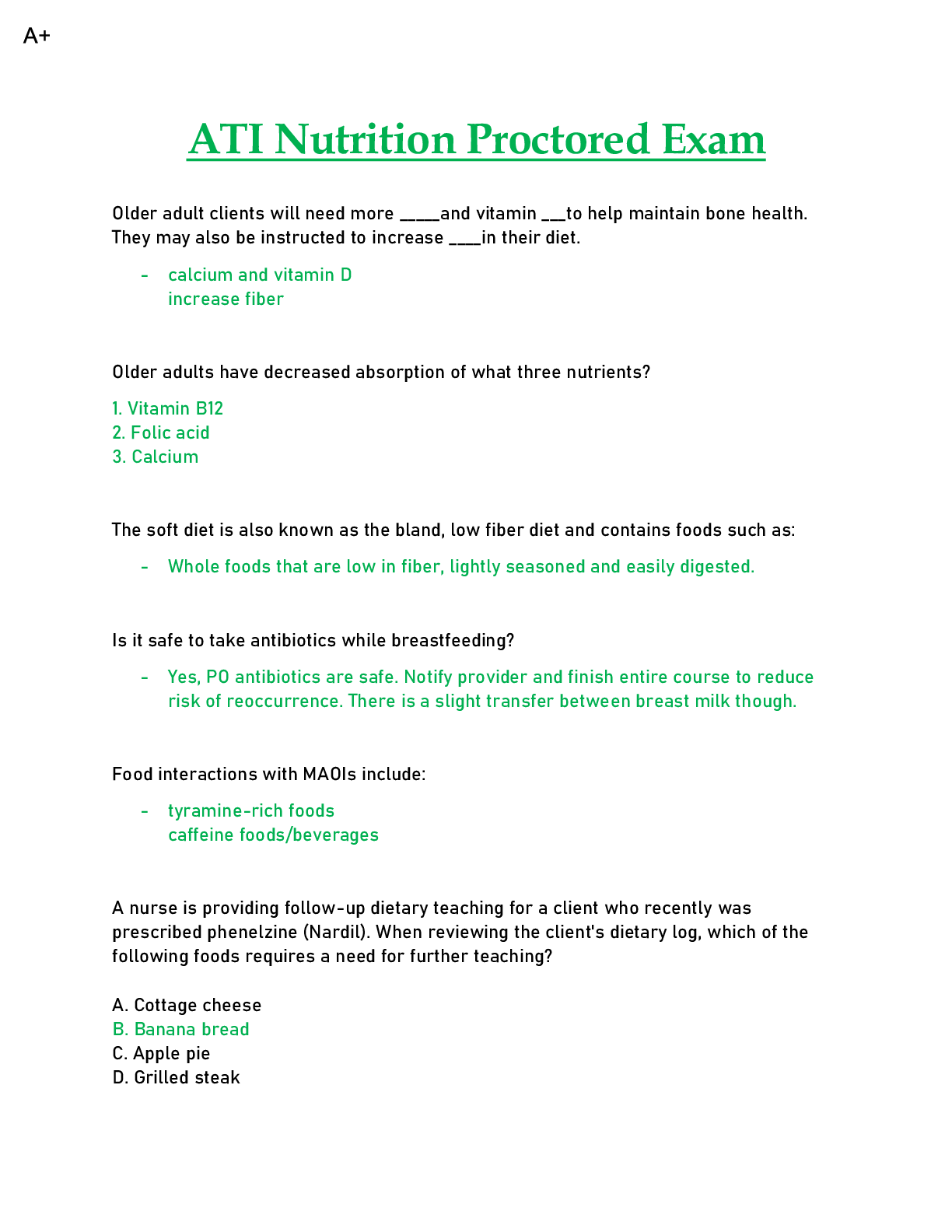
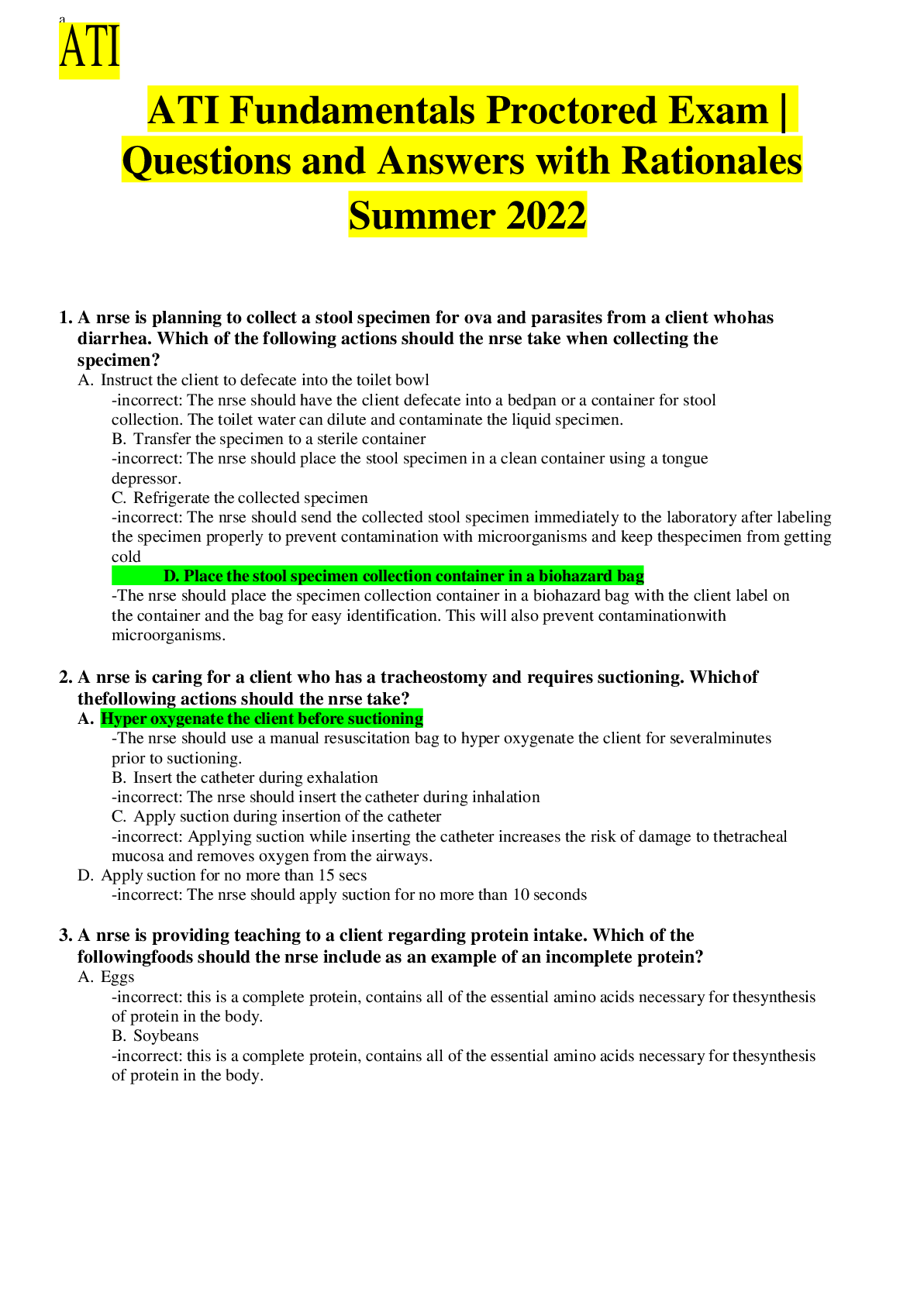
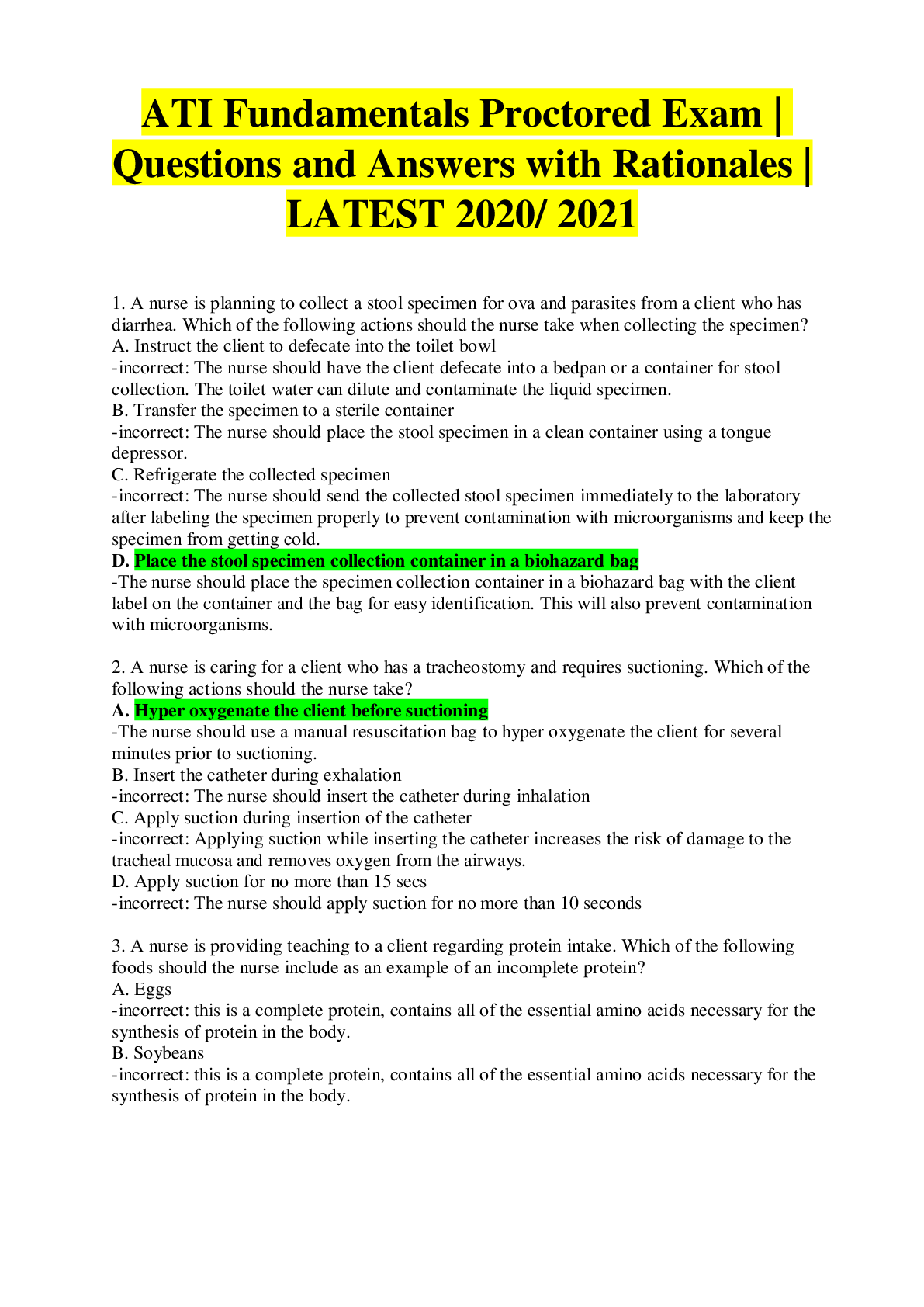
.png)
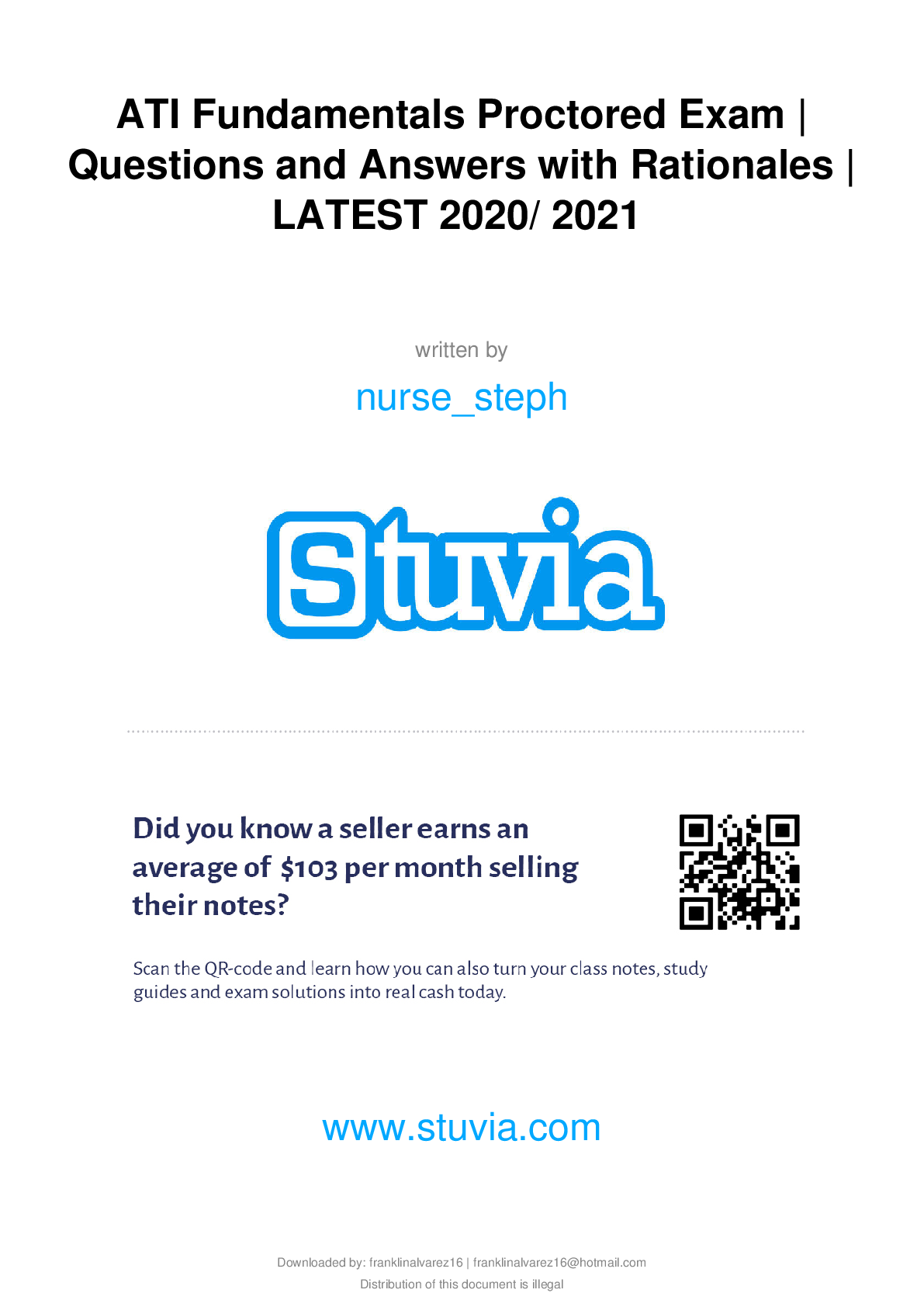
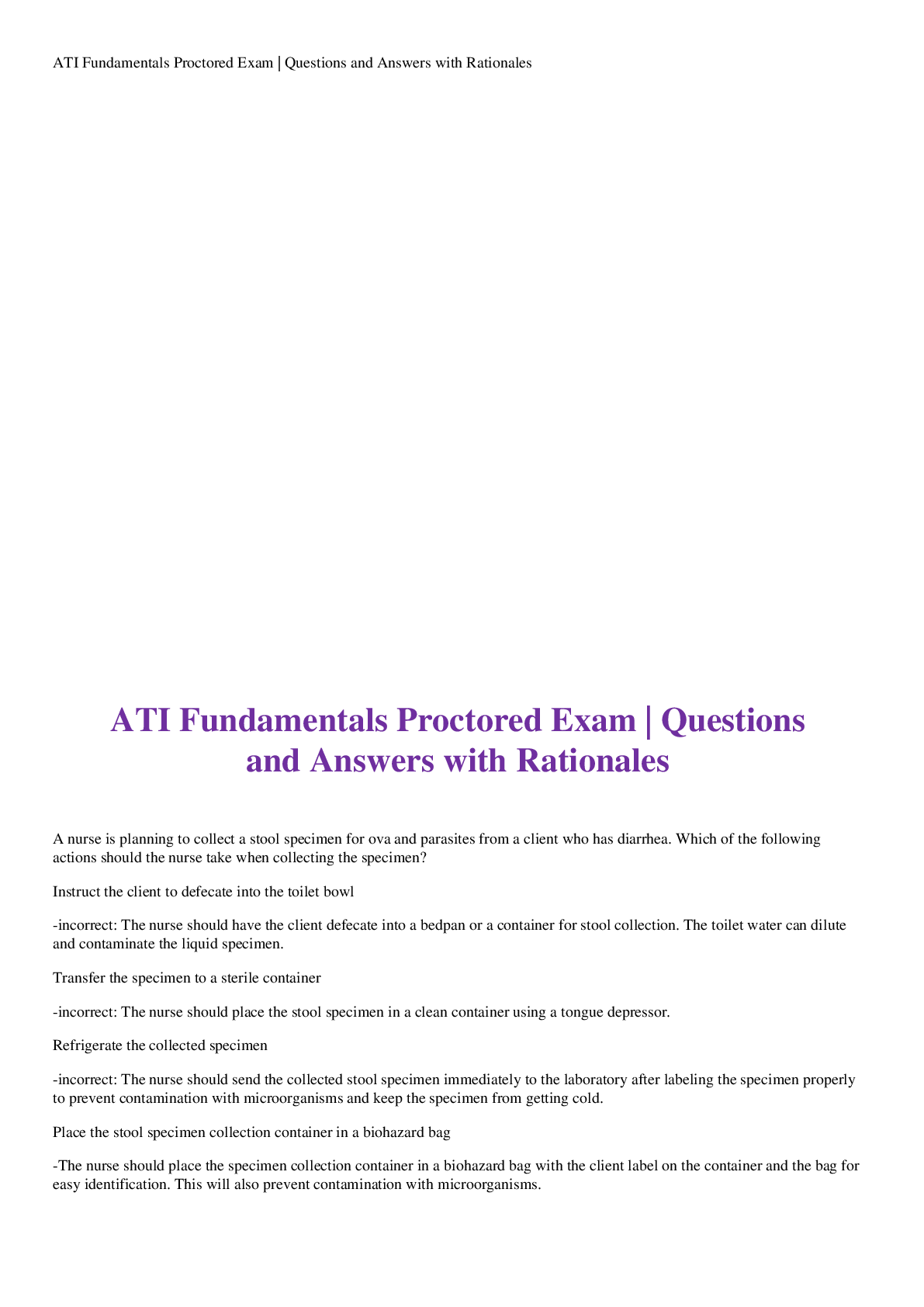
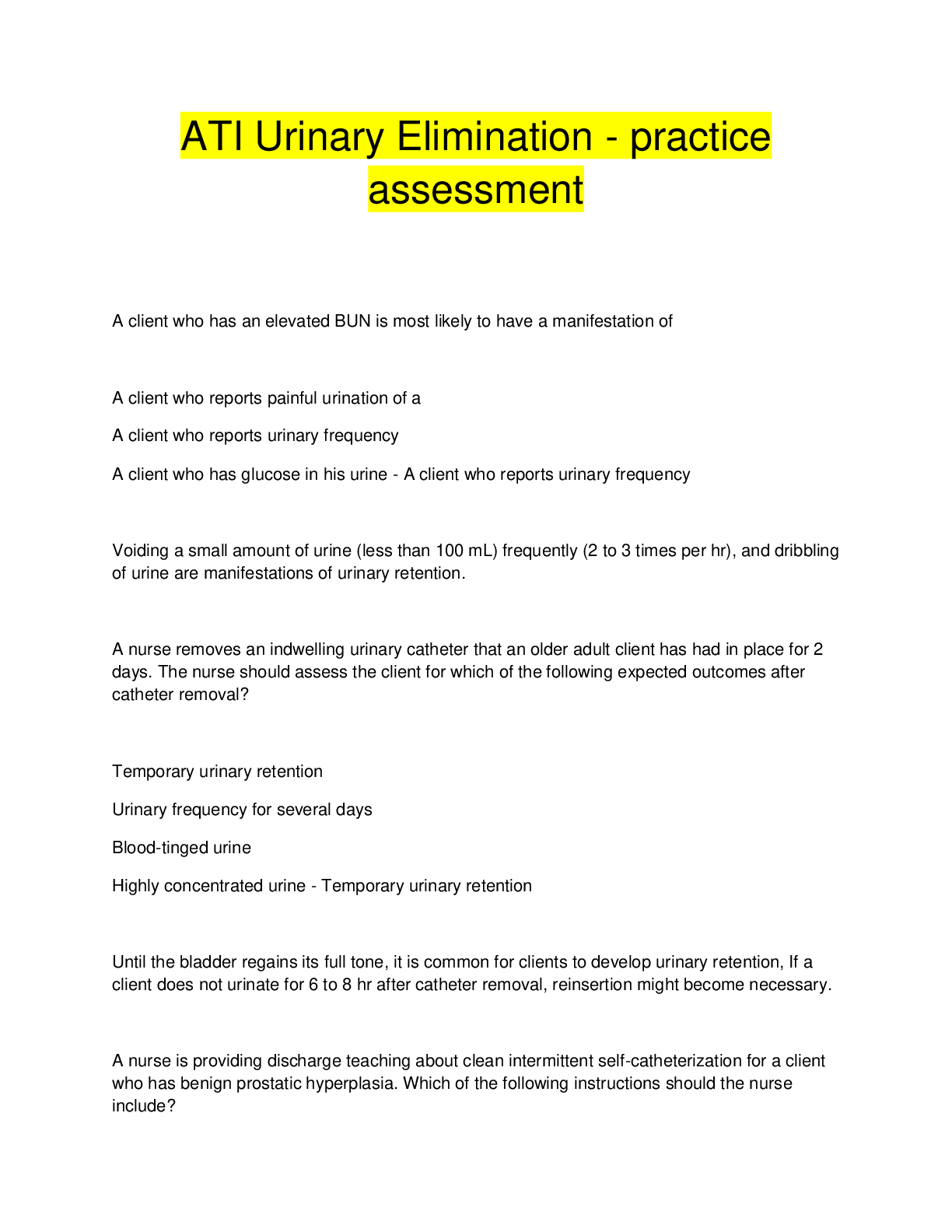
.png)
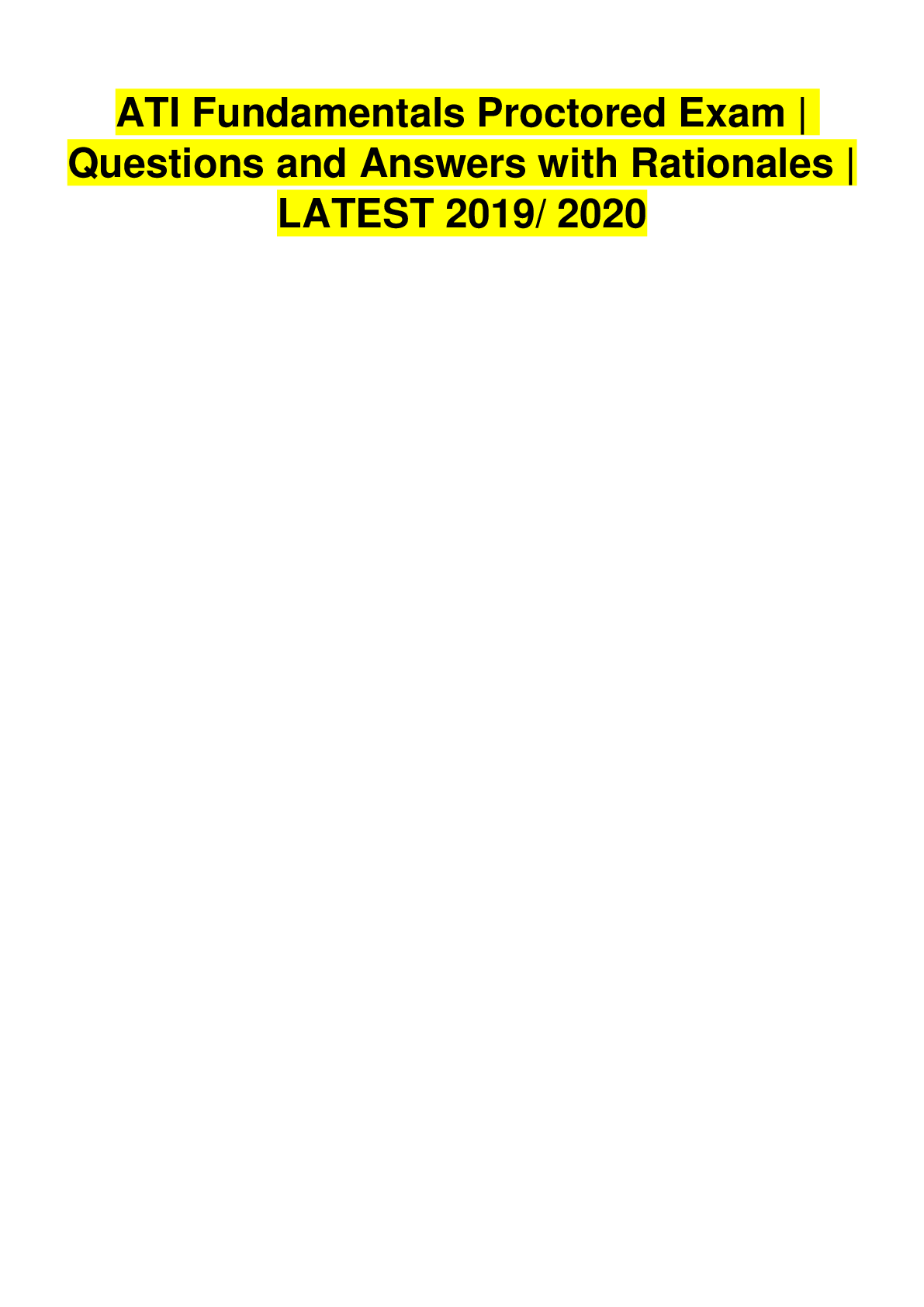
.png)
.png)

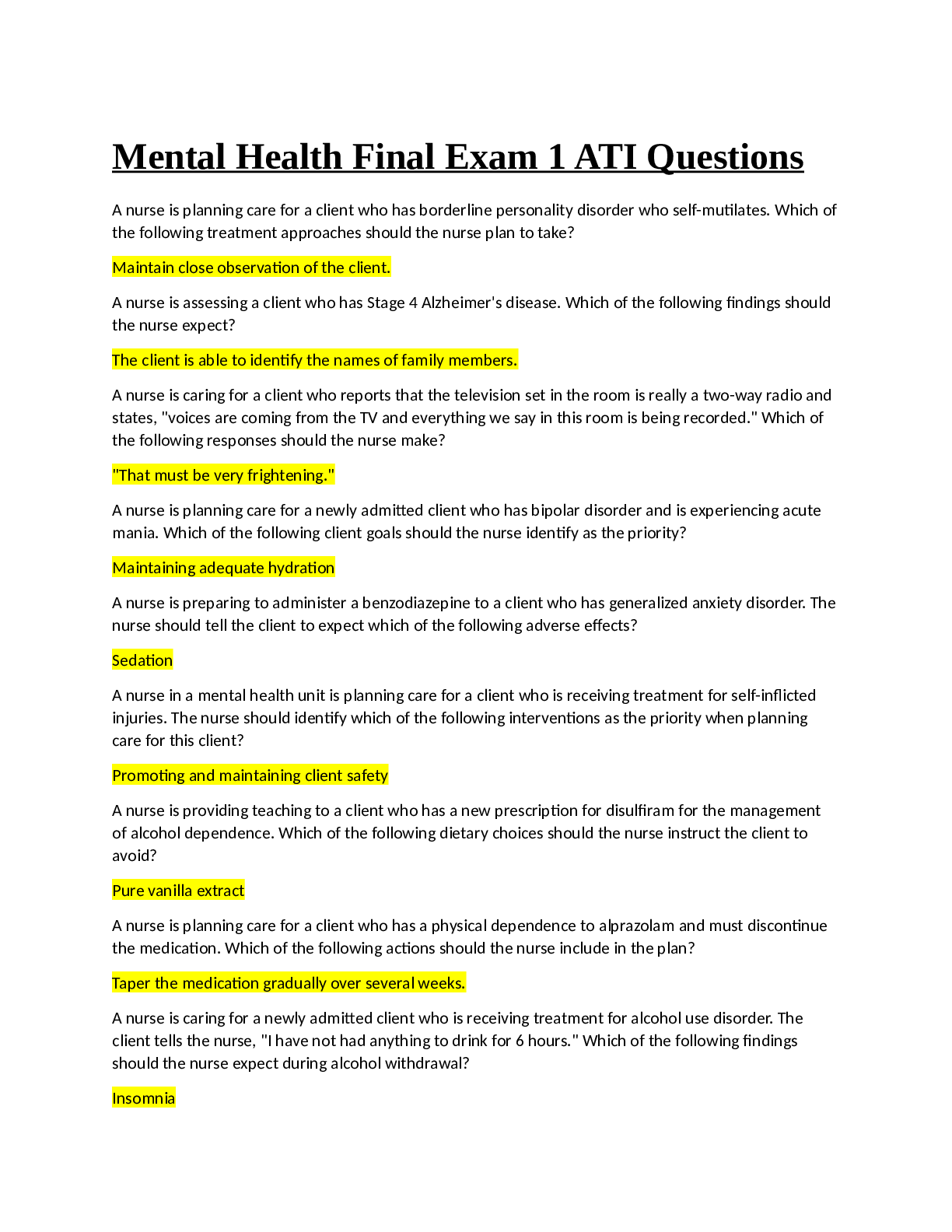

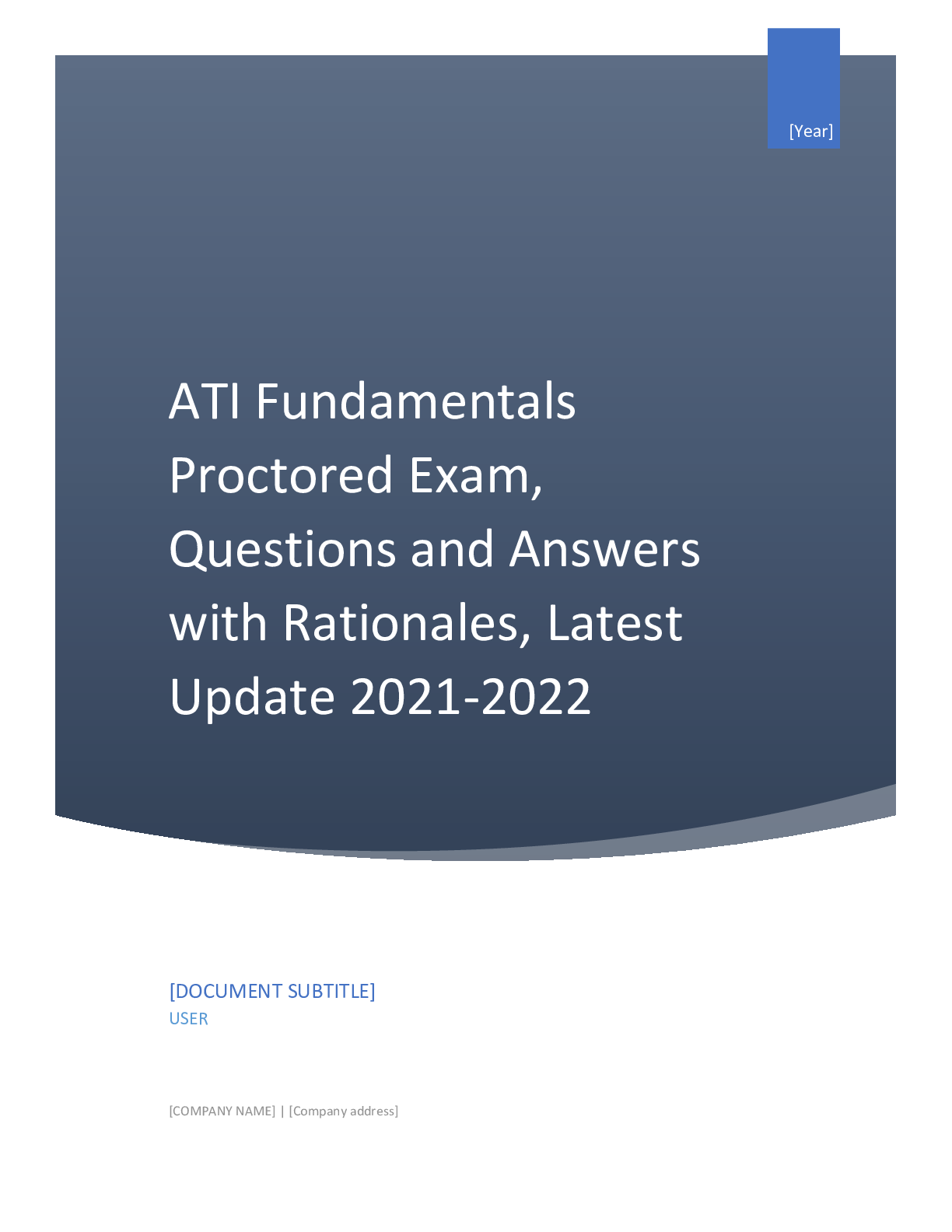
.png)

